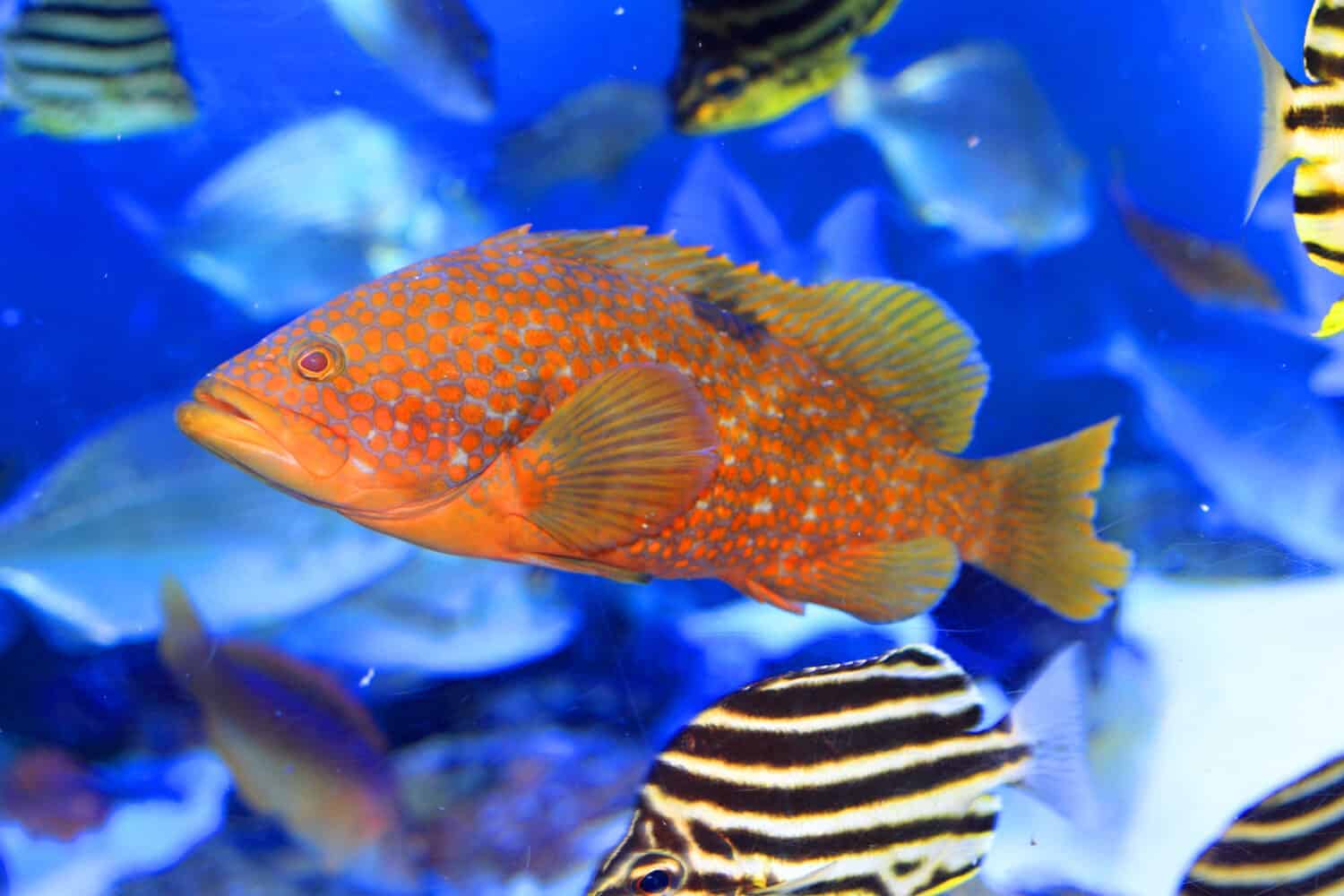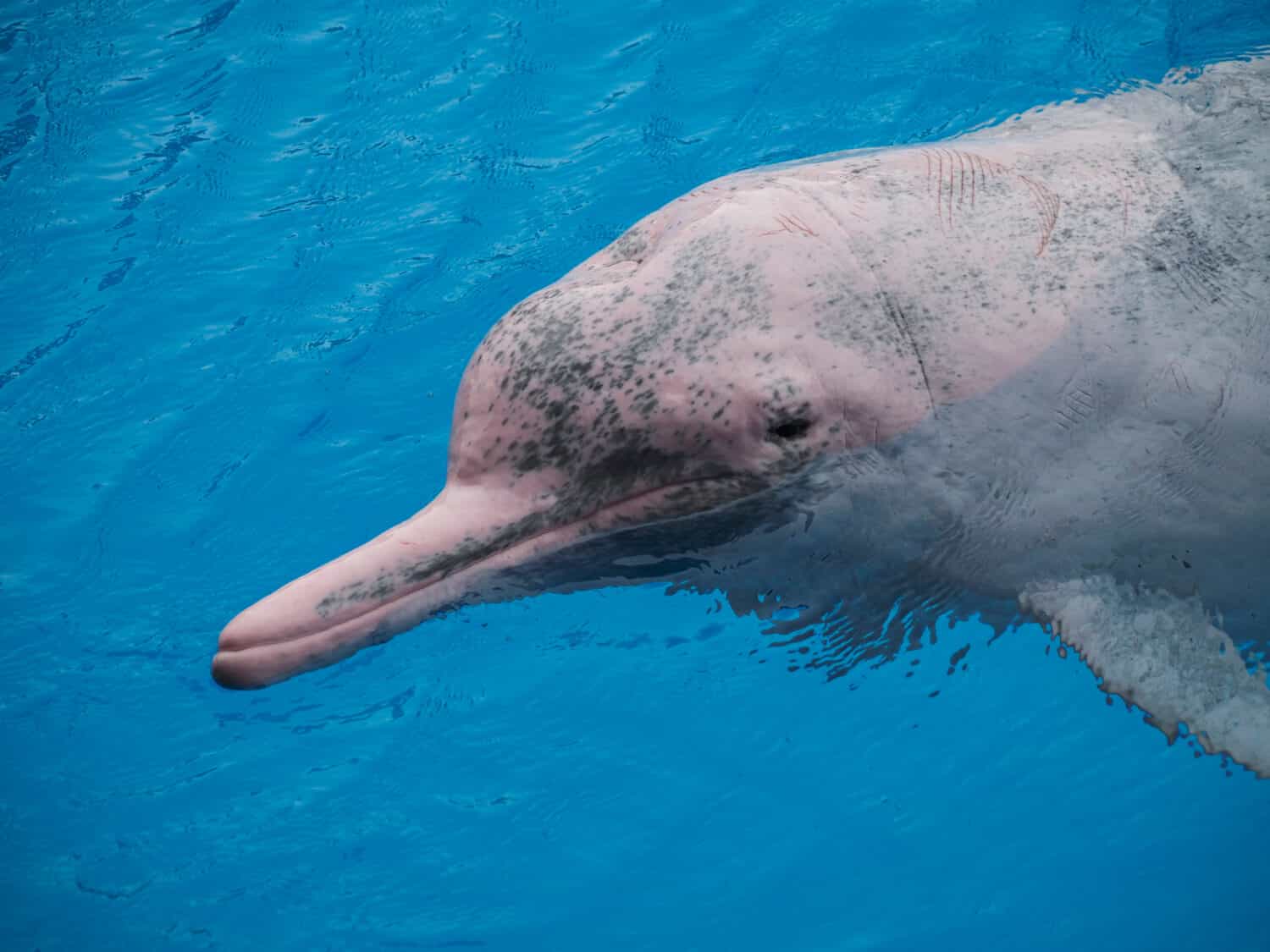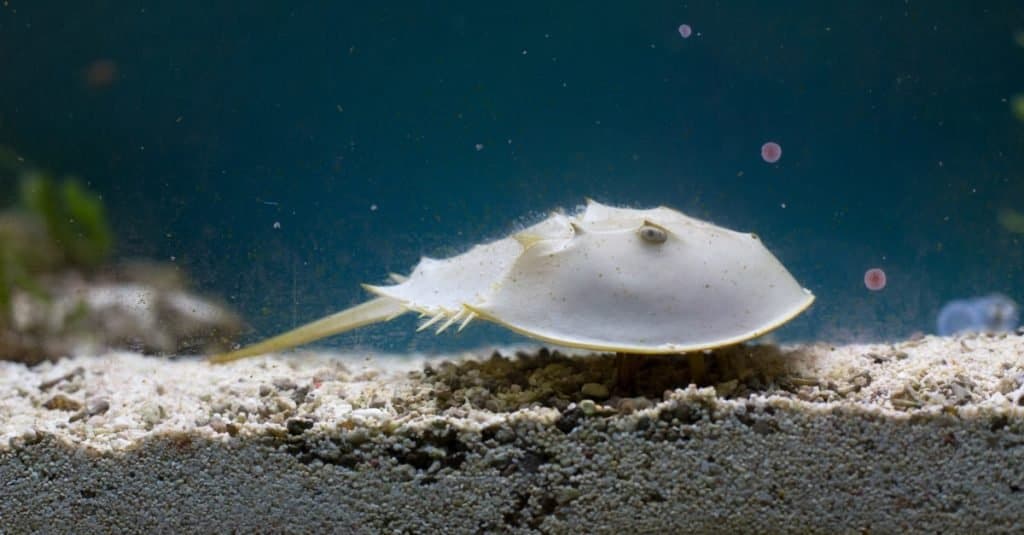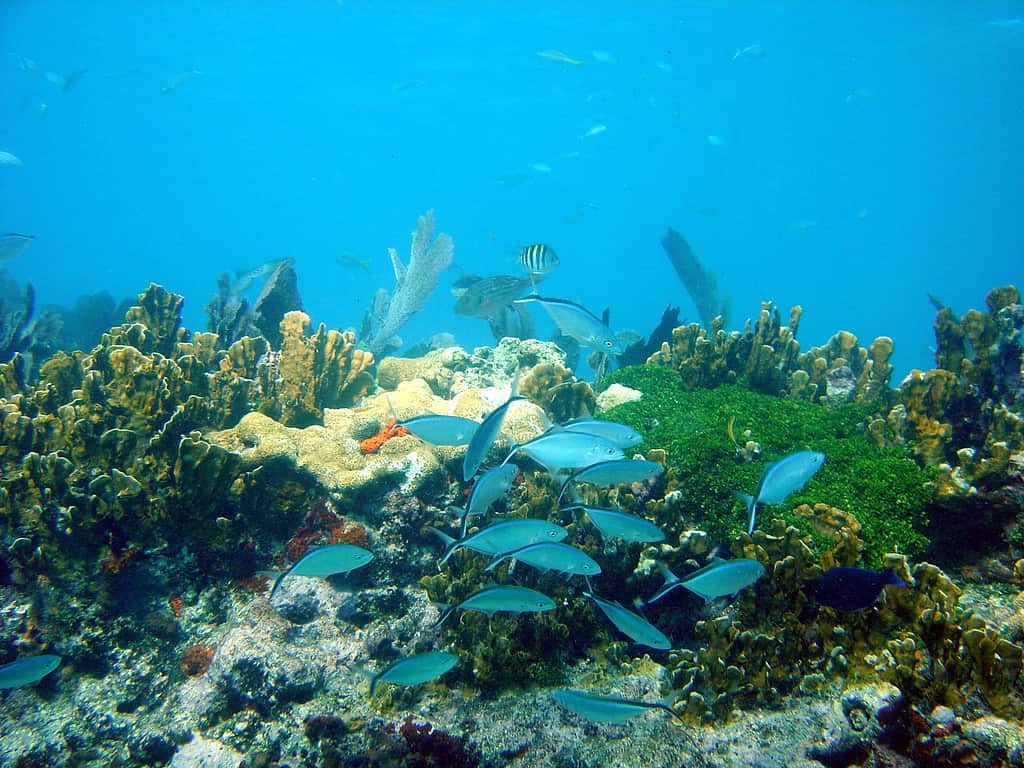Hong Kong is home to one of the busiest ports in Asia. As one of the premier commercial centers of the world, there’s bound to be a lot of traffic in its busy waters.
Victoria Harbour, the primary port of Hong Kong and what was originally known as Hong Kong Harbour, is the third largest natural harbor on earth. It follows only the San Francisco Bay and Brazil’s Guanabara Bay. It’s known more globally for these commercial qualities than for its natural elements. However, there’s quite a bit of biological life stirring about the bottom of this bustling port.
Facts About Victoria Harbour
Victoria Harbour is one of the busiest ports in the world. Every year, about 220,000 vessels of various sizes and purposes pass through to do business. The harbor is utilized by various governing bodies and has been for centuries. There are references to it in texts dating as far back as 1425.
This body of water is home to numerous specimens of marine life. This many unique endemic species that exist only in the waters of the harbor. Victoria Harbour is home to over 6,000 species of fish, mammals, seaweeds and crustaceans.
These numbers indicate that Hong Kong’s waters are home to almost 25% of all of China’s marine life. This is despite the fact that the bay constitutes only 0.3% of its aquatic surface area. Here are some examples of the kinds of creatures and aquatic life that live at the bottom of this merchant vessel mecca.
Fish

The Hong Kong
Grouper
is one of the unique fish in Victoria Harbour
©feathercollector/Shutterstock.com
Victoria Harbour is home to a number of notable fish species. Some of these are only found in this location. Thus they are threatened or endangered due to the environmental stressors they face.
One notable member of the Victoria Harbour fish squadron is the Hong Kong Grouper (Epinephelus akaara), a large grouper that can grow up to several feet in length. Other fish that live in Victoria Harbour include the Andover Lionfish (Pterois andover). Also of note is the endangered Juvenile Mangrove Snapper (Lutjanus argentimaculatus).
Victoria Harbour is home to so many species of fish partially due to the presence of coral reefs in the harbor. This creates a set of ideal conditions for many species of tropical fish to thrive in.
There also are many species of Eels that are present in the waters of Victoria Bay as well. One notable example is the Whitemargin moray eel (Gymnothorax albimarginatus), a venomous Asiatic eel that is so pale as to almost be translucent.
Sharks and Rays

Whale Sharks are occasionally glimpsed in the bay.
©Aaronejbull87/Shutterstock.com
There are also a number of sharks and rays that comb the seafloor of Victoria Harbour. Many of these are utilized in one form or the other in the restaurants of the city above.
Some of the notable species of shark include the Bamboo Shark (Chiloscyllium plagiosum), the Pacific Spadenose Shark (Scoliodon macrorhynchos), and the Whale Shark (Rhincodon typu). Some of the rays that you might encounter include species like the Blotched Fantail Ray (Taeniurops meyeni) and the Pale-Edged Stingray (Telatrygon zugei).
Sharks and rays are closely related and have a number of shared characteristics. Some of these include aspects like the following:
- Cartilaginous bodies
- Multiple paired gill openings
- In-born electroreceptors for prey detection
Sharks and rays are members of a taxa of vertebrates that is one of the oldest surviving on Earth. Many of the signifying features of the species have remained unchanged for millions of years.
Dolphins and Porpoises

The Chinese White Dolphin has a unique coloration.
©nis vanarin/Shutterstock.com
Several dolphin species live within Victoria Harbour. A few are rare and found only in the waters surrounding China and Hong Kong.
One example is the Chinese White Dolphin (Sousa chinensis). Also known as the Indo-Pacific Humpback Dolphin, this dolphin is notable for the mottled coloration of its skin. Its entire body is covered in a stunning mishmash of grey and pink. These dolphins are popular tourist attractions, and many visitors charter boats to observe them in the Harbor. Unfortunately, this animal is under threat from the pollution that has accumulated in Victoria Harbour over the years. Many dolphins succumb to the accumulated toxicity they ingest through the food chain.
Another cetacean found in Victoria Harbour is the Finless Porpoise (Neophocaena phocaenoides). So-called because of its lack of a dorsal fin, this porpoise can be found close to the coast of much of Southeast Asia. The Finless Porpoise is the only whale or dolphin that truly lacks a dorsal fin of any kind. Instead, there is a low ridge covered in thick skin. This perhaps indicates the presence of a fin in eons past.
Crustaceans

Horseshoe Crabs are one of the oldest living creatures on Earth.
©Budimir Jevtic/Shutterstock.com
The fertile floor of Victoria Harbour is also home to a number of crustacean species. Whether nestled amongst the coral reefs or hidden in the sand, crustaceans provide an important food source. This is the case for both the people of Hong Kong and the aquatic denizens of Victoria Harbour.
In the water of Victoria Bay, you can find a number of distinctive crustaceans. One example is the Horseshoe Crab (Tachypleus gigas). Horseshoe crabs are an ancient type of crustacean that isn’t a true crab – in fact, it’s not even really a Crustacean. Rather, it’s the sole member of a biological order known as Xiphosura, which traces its origins back to approximately 440 million years ago. This is why scientists call it a “living fossil”.
Crustaceans have traditionally been one of the most important fishing resources for the commercial fisheries of the area. The stability of these hatcheries is currently under stress from the utilization of a technique known as bottom-trawling. This fishing technique encourages gross overfishing.
Some of the local crustaceans aren’t stressed by the presence of these challenges. The Chinese Mitten Crab (Eriocheir sinensis) is remarkably tolerant towards heavy metal pollution in water. In fact, it is an invasive species in other parts of the globe, so much so that the European Union has banned its import for even culinary purposes.
Coral

Coral reefs provide shelter and nourishment for many species of fish in Victoria Harbour.
©Matt Kieffer from London, United Kingdom, CC BY-SA 2.0 <https://creativecommons.org/licenses/by-sa/2.0>, via Wikimedia Commons – License
One of the reasons that so many fish flock to Victoria Harbour is due to the presence of beds of Coral in the sea bed. Coral provides nourishment and shelter to thousands of marine life species throughout the world. It is considered to be a sign of a healthy marine ecosystem. Coral is formed through a delicate process and requires very specific conditions to grow. Much of the world’s coral reefs are close to the coastline of a land mass, with the mouth of a freshwater river close by.
The saline waters of Victoria Harbour are partially fed by the nearby Pearl River. Although the conditions of Victoria Bay are not the most pristine or Coral-friendly, there are over 85 distinct species of coral cataloged in this area. Coral can oftentimes provide marine life enthusiasts a spectacle on its own. This is due to the fantastic shapes and colors that this phenomenon is capable of producing.
Coral is under threat worldwide due to ocean pollution and climate change. Coral bleaching has decimated many of the world’s coral reefs. However, there is a positive indication that these ecosystems have the ability to bounce back from environmental damage.
Birds and Plant-life Around Victoria Harbour
While the bottom of Victoria Harbour is a bustling environment of sea life, there is plenty of natural wonder taking place on and around the harbor land. Here are some creatures and plant life you’ll find in the area.
Seabirds

The Magnificent Frigate-bird has a distinctive pouch underneath its beak.
©Jason Corriveau / public domain – License
Many types of seabirds flock to Victoria Harbour. Some come seasonally on migration routes, while others make the waters their permanent home.
There are only three species of birds that breed and nest in Hong Kong, and all three are species of terns. The members of this cohort are the Black-naped Tern (Sterna sumatrana), Bridled Tern (Onychoprion anaethetus), and Roseate Tern (Sterna dougallii).
Some of the migrating birds that pass through the bay include the Streaked Shearwater (Calonectris leucomelas). You also might be able to catch a glimpse of a Magnificent Frigate-bird (Fregata magnificens). These ostentatious birds are notable for the puffy skin bags that lie under their beaks – males will inflate theirs when making breeding displays.
Mangroves

Hong Kong’s coastline is lined with mangrove swamps.
©Sean Lema/Shutterstock.com
Hong Kong’s harbor and shoreline is lined with mangrove swamps. One shining example is the Mai Po Nature Reserve. Mangrove trees are sensitive trees that grow only in very specific types of environments.
Hong Kong’s harbor and shoreline are lined with mangrove swamps. One shining example is the Mai Po Nature Reserve. Mangrove trees are sensitive trees that grow only in very specific types of environments.
These unique ecosystems provide shelter to a number of species themselves. Several types of fish and other wildlife live only in the funnels of the mangrove swamp. Many serve as homes to migratory sea birds, such as the Black-faced spoonbill (Platalea minor).
One example of an animal that dwells within the mangroves of Hong Kong includes the Mangrove Mud Crab (Scylla serrata). This crab burrows in the muddy underbelly of the mangrove swamp, feeding on smaller aquatic lifeforms such as shrimp and guppies.
In recent decades, the mangroves of Hong Kong and the rest of China have suffered setbacks due to a number of environmental issues. The mangroves are home to a number of rare bird and insect species, as well as mammals. Many scientists point out the importance of preserving Hong Kong’s mangrove forest. This is for the vital protection that they provide for these rare species.
Preserving Marine Life for The Future
Due to the heavy commercial and industrial usage that has occurred in Victoria Harbour over the past century, the bay is under heavy environmental stress. Part of the challenges that have beset Victoria Harbour environmentally is due to Hong Kong’s rapid growth as an urban area. As one of the world’s commercial centers in a changing world, the bay has been subject to a rapid influx of commercial activity.
This has led to significant reductions in many of the populations of marine life in the region. Despite these setbacks, there have been significant cleanup attempts from both the city government of Hong Kong and various philanthropic groups.
Some of these pushes have already borne fruit – for example, the Clean Waterways Initiative has made leeway in encouraging safer environmental practices in the waters surrounding Hong Kong. The Society of The Protection of The Harbor is another venerable environmental non-profit that works to protect marine life in the bay.
Given the steadfast perseverance of the efforts at restoration thus far, with more education, outreach, and resources thrown towards preserving the natural wonders of Victoria Harbour, there should be a strong chance at further replenishing this hotbed of marine biodiversity. Achieving this will benefit everyone. We all will be able to enjoy and study this hotbed of marine biodiversity for years to come.
The photo featured at the top of this post is © EarnestTse/Shutterstock.com
Thank you for reading! Have some feedback for us? Contact the AZ Animals editorial team.






